Browse Primary Sources
Locate primary sources, including images, objects, media, and texts. Annotations by scholars contextualize sources.
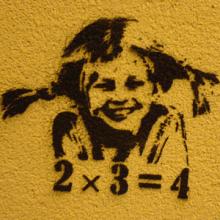
Pippi Graffiti Stencil
This image found on a wall around the University of Vienna and the Austrian Parliament, in 2008, is a graffiti stencil of Pippi Longstocking, the eponymous fictional character created by the Swedish children's book author, Astrid Lindgren, in 1945. Since then, Pippi Långstrump (in Swedish) has been translated into 90 languages and made into movies and TV series.
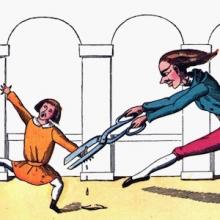
Der Struwwelpeter (Slovenly Peter)
Published in 1858, Der Struwwelpeter (Shaggy Peter) is a German children's book first published anonymously under a different title in 1845 by Heinrich Hoffman. Hoffman, a Frankfurt physician and father, wrote the book after realizing that there were none he wanted to buy for his 3-year-old son for Christmas. The first English translation was published in 1848.
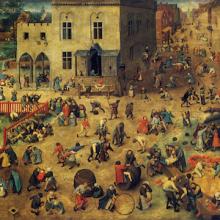
Pieter Bruegel the Elder’s "Children's Games"
Flemish painter, Pieter Bruegel the Elder, painted "Children's Games" in 1560. While many of his other paintings also portray peasant folk culture, this summer townscape that is devoid of adults is rich in detail about Medieval children—especially at play.
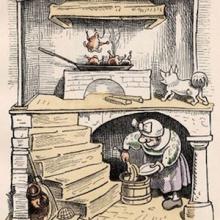
Max und Moritz
Written and illustrated by German painter and poet, Wilhelm Busch, Max und Moritz (1865) is a children's story written in doggerel verse and illustrated in a comic-like style about two unscrupulous boys who taunt adults with their sadistic pranks.
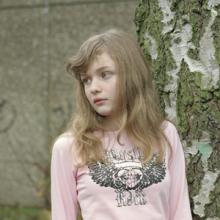
Portrait of Darleen, 2007
The photograph is from an exhibition entitled "Thirteen" by German professional photographer Janina Wick. It shows a young girl leaning slightly against a tree, against the background of a graffiti-covered wall, in an urban environment.

Portrait of Isabelle, 2007
The photograph is from an exhibition entitled "Thirteen" by German professional photographer Janina Wick. It shows a young female ice skater leaning against the wall in a sports center. The elaborate costume, hairstyle, and makeup shows that she is not a casual skater, but one who trains for formal competition.
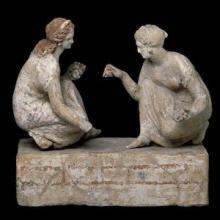
Ancient Greek Adolescent Girls at Play
This small (5.5 inches high) terracotta sculpture was made in Greek southern Italy in the late fourth century BCE. It depicts two adolescent girls playing the game of "knucklebones" (astragaloi in Greek). The game was usually played like the modern game of "jacks": one threw the knucklebones in the air and attempted to catch as many as possible.
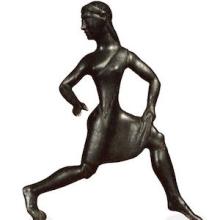
Ancient Greek Girl Athlete
This unusual bronze figurine of a female runner was possibly made in or near Sparta, Greece, between 520-500 BCE. Ancient Sparta was the only Greek city-state that provided girls with public schooling including physical education. Girls were praised for their swiftness and likened to prized racehorses in choral songs (called partheneia) sung by girls' choruses in Sparta and elsewhere.
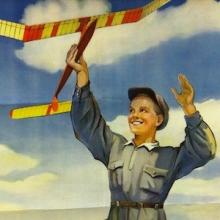
Traditional Soviet Values for Children
Soviet propaganda posters presented positive images of healthy, active people engaged in useful service to the state, including children. This Soviet poster from 1953 was typical of this image.

Kaichi and Mitsuke Schools
While most pre-Meiji commoner schools were held either in temples or in the homes of the teachers, most teachers and officials associated with the Meiji education reforms emphasized the importance of having schools in new buildings created specifically for the purpose of education.
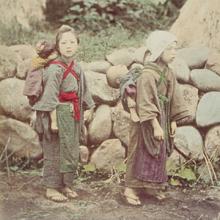
Two Girls Carrying Children
One of the major obstacles to consistent attendance at the new elementary schools was the fact that children played an important role in the household economy. One such role was that of caregiver for younger children.
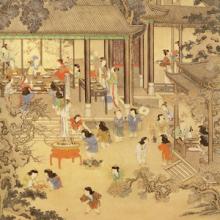
Joyous Celebration at the New Year
This image offers an artistic view of a household celebrating the New Year's holiday. Here we find children at play amidst a scene of domestic joy and prosperity for an elite family of the Qing dynasty (1644-1911). The detail of the image is rich in its representation of material culture, shared domestic space, as well as visions of play and the culinary endeavor of a grand feast.
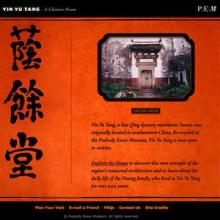
Yin Yu Tang: A Chinese Home
The Yin Yu Tang house provides a perspective on childhood in a period that bridges the conclusion of the Qing dynasty (1644-1911) and the rise of a new 20th-century republic in China.
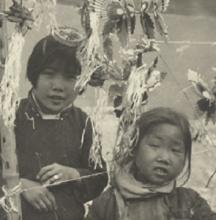
Children and Toys
These photographs come from The Hedda Morrison Photographs of China, 1933-1946 website, a collection of photographs that provide a perspective on childhood in a period that bridges the conclusion of the Qing dynasty (1644-1911) and the rise of a new 20th-century republic in China.
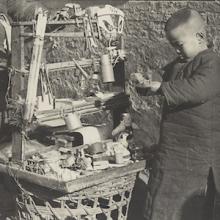
Selling Toys
These photographs come from The Hedda Morrison Photographs of China, 1933-1946 website, a collection of photographs that provide a perspective on childhood in a period that bridges the conclusion of the Qing dynasty (1644-1911) and the rise of a new 20th-century republic in China.
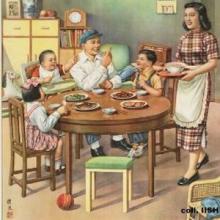
The happy life Chairman Mao gave us, 1954
Visual images provide valuable material for the exploration of childhood, youth and history. Propaganda posters from the People's Republic of China (1949-present) are particularly rich, offering images that are both bold and subtle, and which many students find as nicely accessible sources to explore.
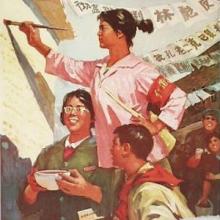
Protect the Great Results of the Cultural Revolution, 1974
Visual images provide valuable material for the exploration of childhood, youth and history. Propaganda posters from the People’s Republic of China (1949-present) are particularly rich, offering images that are both bold and subtle, and which many students find as nicely accessible sources to explore.
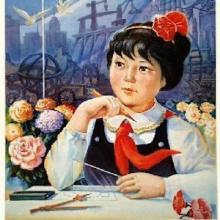
Studying for the mother country, 1986
Visual images provide valuable material for the exploration of childhood, youth and history. Propaganda posters from the People’s Republic of China (1949-present) are particularly rich, offering images that are both bold and subtle, and which many students find as nicely accessible sources to explore.
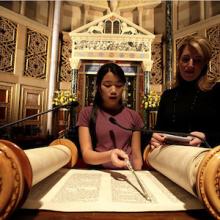
Bat Mitzvah
The girl in the photograph, Cecelia Nealon-Shapiro, reads from the Torah as part of her bat mitzvah, a rite of passage ceremony, at Congregation Rodeph Sholom in New York City. Prior to this day, she attended classes in Jewish history and tradition, Hebrew, and recitation at the Reform synagogue, where girls now participate in a rite formerly reserved for boys, the bar mitzvah.
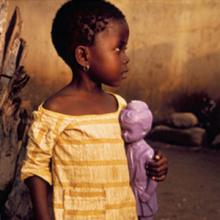
Child with Purple Plastic Doll near Kumasi, Ghana
The girl in the photograph is from the Asante peoples in Ghana. She is holding a purple plastic baby doll of a type that is frequently found in markets in Ghana. The doll is both imported from Taiwan and made domestically in Ghana. The modern plastic doll is based on an older, traditional form of wooden figurine manufactured by village blacksmiths to represent the adult, female figure.